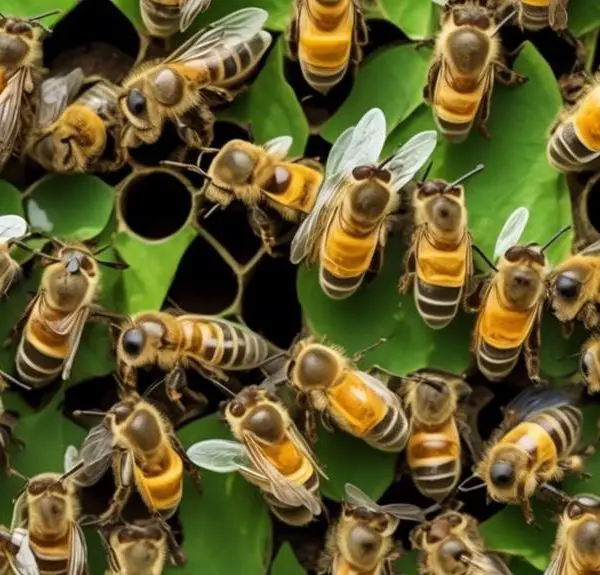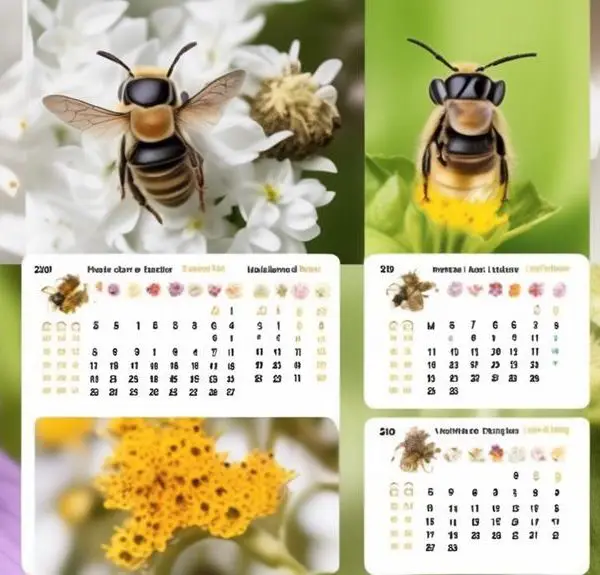Get ready to discover the fascinating life cycle and egg-laying capacity of the industrious leaf cutter bee.
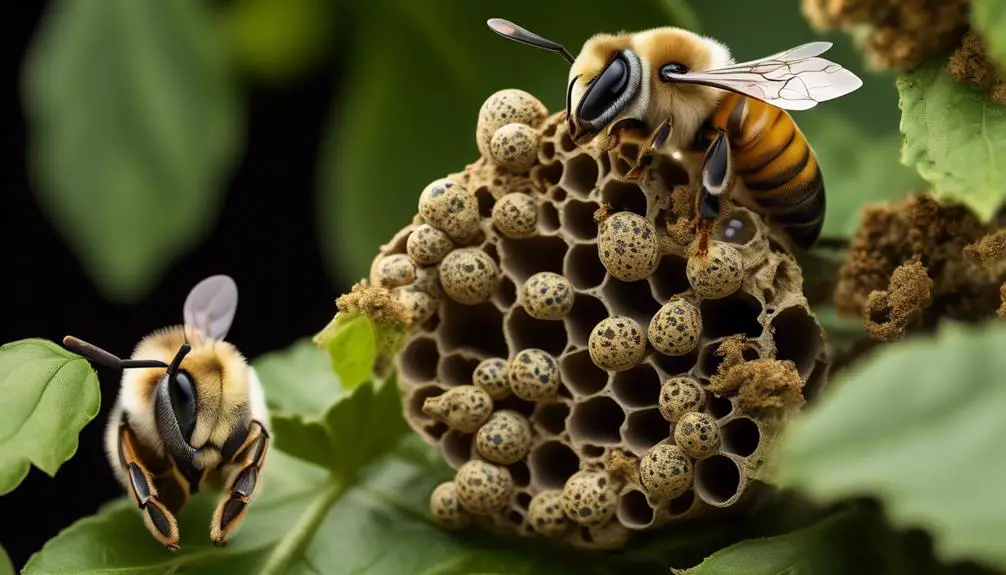
How Many Eggs Does a Leaf Cutter Bee Lay
Did you know that a single leaf cutter bee can lay up to 40 eggs in her brief, yet industrious lifetime?
You may wonder how these solitary insects manage such a feat, given their short lifespan and the many challenges they face in their environment.
Well, the secret lies in their unique reproductive cycle, which is intricately tied to their leaf-cutting behaviors.
But how exactly does that work, and what influences the number of eggs a leaf cutter bee can lay?
Stick around, and you'll find out the fascinating details of these remarkable pollinators.
Key Takeaways
- Leaf Cutter Bees are known for their efficient leaf-cutting habits and construct nests in the ground or plant stems.
- The reproductive cycle of a Leaf Cutter Bee consists of four stages: egg, larva, pupa, and adult.
- The female bee lays a single egg in a cell made from leaf fragments, along with provisions of pollen and nectar.
- The number of eggs laid by a Leaf Cutter Bee can vary but on average, they can lay about 35 to 40 eggs in their lifetime.
Understanding Leaf Cutter Bees
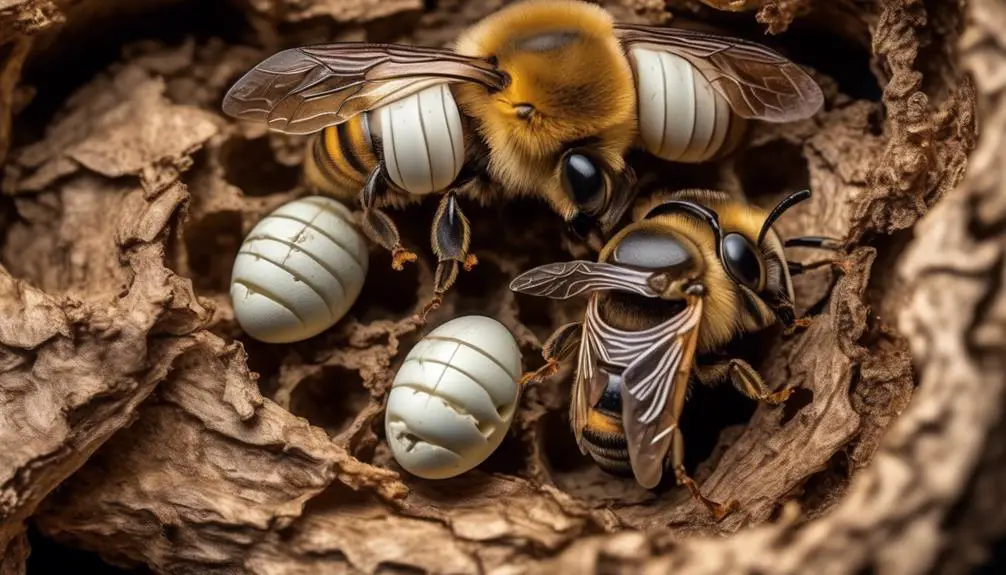
To fully comprehend the intricacies of Leaf Cutter Bees, it's crucial to delve into their unique behaviors, reproductive cycles, and ecological roles.
These insects are part of the Megachilidae family, and they're known for their efficient leaf-cutting habits. You'll often find them buzzing around shrubs or plants, skillfully cutting away at the leaves to use in their nest construction.
Their reproductive cycle is particularly fascinating. Unlike honeybees that have a queen, each female Leaf Cutter Bee is capable of reproduction. After mating, the female starts constructing her nest, often in the ground or in plant stems. She lines each cell with leaf pieces and deposits an egg, along with a mixture of nectar and pollen for the larva to feed on.
Ecologically, they play a vital role in the environment. They're excellent pollinators, often more efficient than honeybees. As they move from flower to flower, they inadvertently transfer pollen, aiding in plant reproduction.
Understanding the Leaf Cutter Bee isn't just about knowing their egg count, but appreciating their role in maintaining ecological balance.
Leaf Cutter Bee Reproduction Cycle
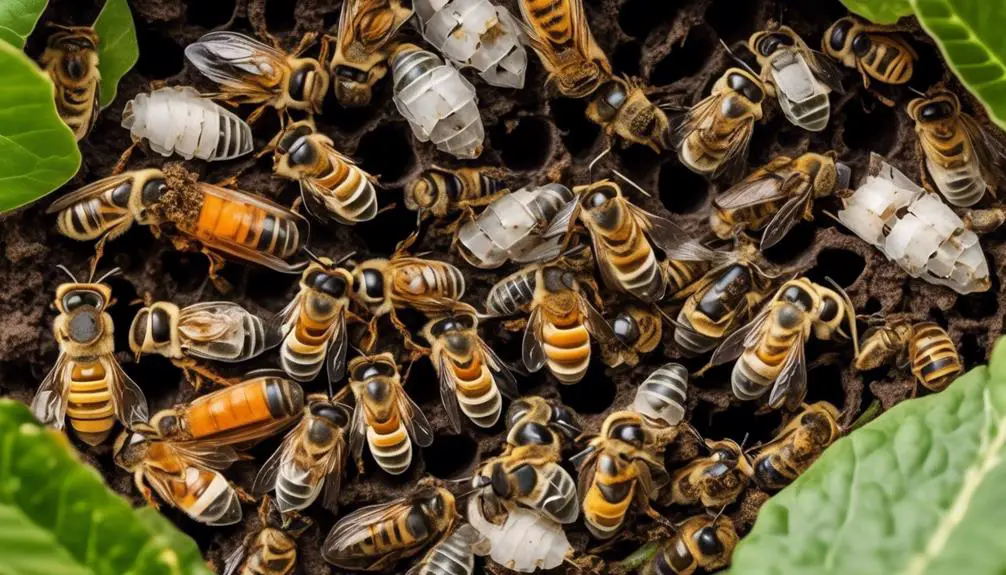
Having grasped the ecological significance of the Leaf Cutter Bees, let's now examine their fascinating reproductive cycle in depth. The life cycle of these industrious insects comprises of four primary stages: egg, larva, pupa, and adult, much like other bee species.
The process starts when a female leaf cutter bee lays a single egg in a cell inside her nest. This cell, crafted from leaf fragments, also contains a provision of pollen and nectar — a nourishing meal for the soon-to-be larva. After laying the egg, the female seals the cell and moves on to create the next one.
Once the egg hatches, the larva feeds on the stored provisions until it's fully grown. It then starts spinning a cocoon within the cell, transitioning into the pupal stage. Inside this protective casing, the bee undergoes metamorphosis, transforming into an adult.
The adult bee, ready to face the outside world, chews its way out of the cocoon and cell. It's now time for the bee to take on the world, find a mate and initiate a new reproductive cycle, thus ensuring the continuation of the species.
You'll find this cycle an example of nature's miraculous efficiency.
Egg-Laying Process of Leaf Cutter Bees
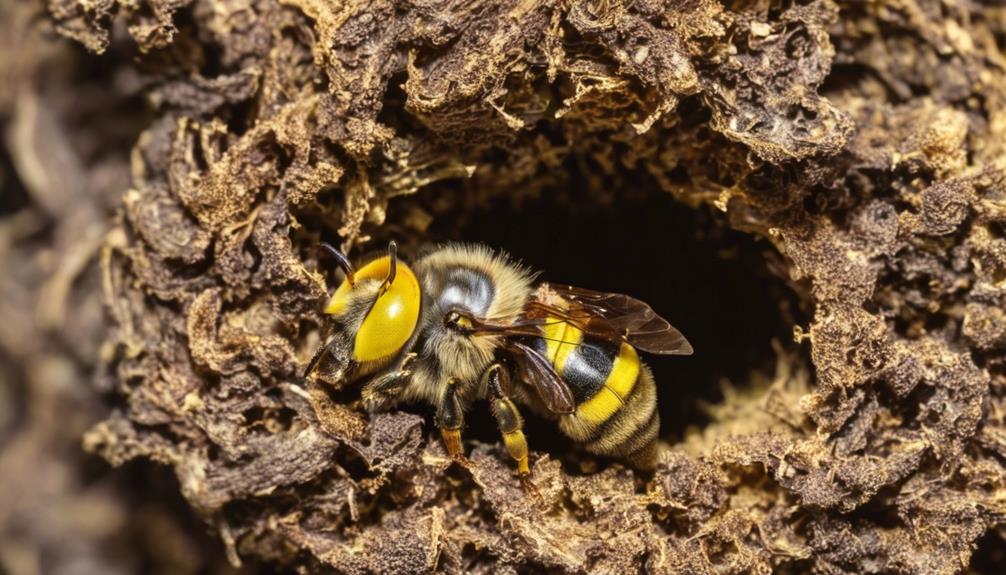
Let's delve into the intricate process of egg-laying in leaf cutter bees, a crucial phase that sets the stage for the next generation of these industrious insects.
To start, the female bee selects a suitable nesting site, often choosing decomposing wood or plant stems. She then uses her sharp mandibles to cut out leaf fragments, which she transports back to the nest.
At the nest, she meticulously arranges the leaf fragments to form a brood cell. It's here she'll lay her egg. But first, she needs to prepare some sustenance for her future offspring. She creates a nutritious mixture of nectar and pollen, known as bee bread, and deposits it in the cell.
Once the bee bread is in place, she lays a single egg atop the mound. She then seals off the cell with more leaf fragments, effectively creating a leafy incubator for her egg. This process is repeated until she fills the entire nest with brood cells.
The mother bee's job is done. She won't live to see her offspring, but she's meticulously ensured their survival. It's a testament to nature's remarkable life cycle, where effort expended today ensures the continuity of species tomorrow.
Determining Leaf Cutter Bee Egg Count
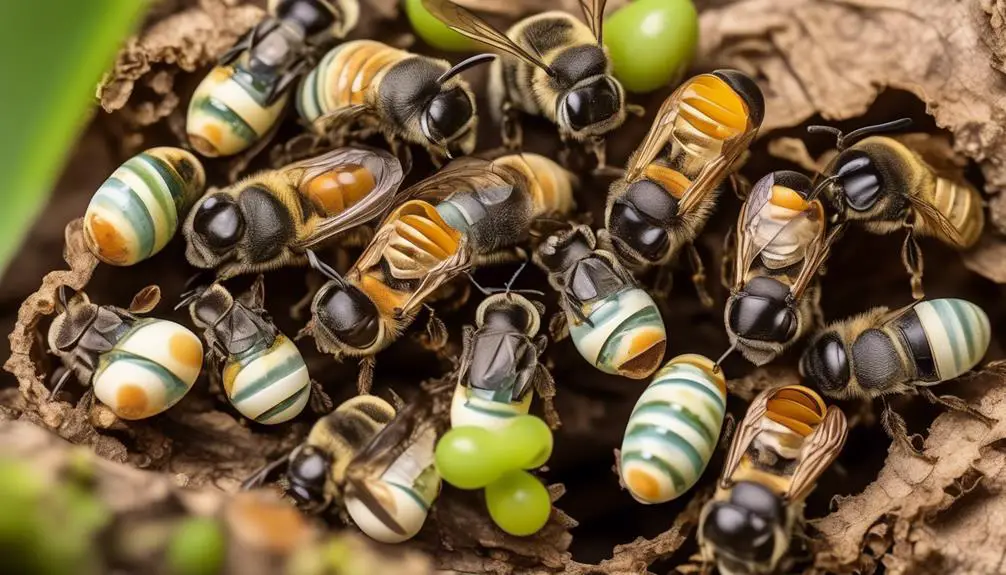
After observing the meticulous process of leaf cutter bee egg-laying, you may wonder exactly how many eggs a single female bee lays in her lifetime. The answer isn't straightforward, as it relies on several factors, including the bee's age, health, and living conditions.
Scientifically, the average leaf cutter bee can lay about 35 to 40 eggs during her lifespan. That's assuming ideal conditions, including ample food sources and suitable nesting sites. However, it's important to note that this is merely an average. Some bees may lay fewer eggs, while others may exceed this number.
To accurately determine the egg count, you'd need to carry out a detailed examination of the bee's nest. Inside each leafy cell, you'll typically find a single egg. By counting these cells, you'd get a rough estimate of the bee's eggs.
However, this method isn't foolproof. Some eggs may not be viable or may have already hatched into larvae by the time of your count. Therefore, it's crucial to consider these potential variations when determining the exact egg count of a leaf cutter bee.
Impact of Egg Laying on Bee Population
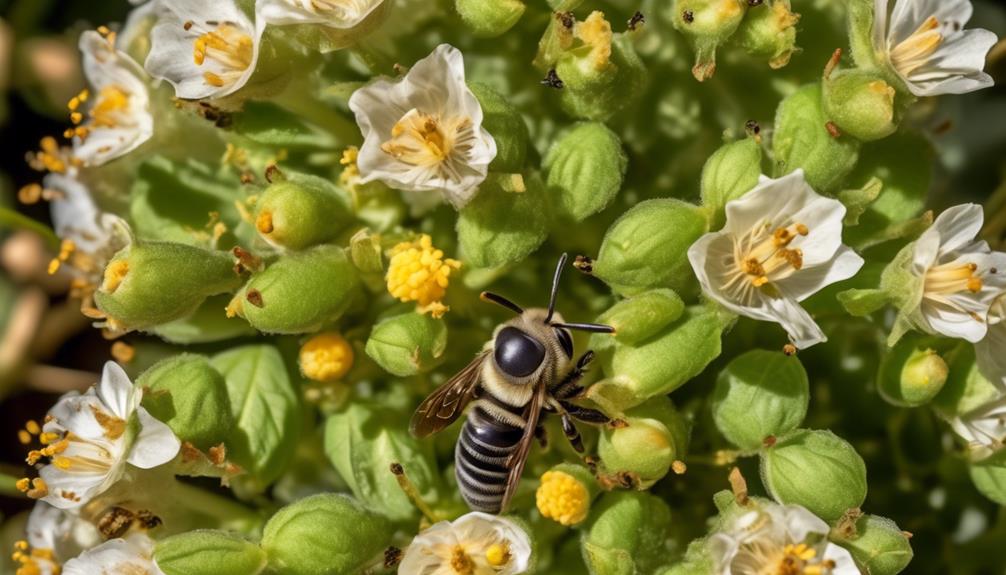
Understanding the egg-laying habits of the leaf cutter bee not only provides insight into individual bee behavior but also serves as a key factor in assessing the overall health and growth of the bee population. The number of eggs laid directly impacts the population's size and genetic diversity.
Egg Laying Rate | Impact on Population Size | Impact on Genetic Diversity |
|---|---|---|
High | Rapid population growth | Enhanced genetic diversity |
Medium | Stable population growth | Moderate genetic diversity |
Low | Slow population growth | Reduced genetic diversity |
You'll notice that a high egg-laying rate can lead to rapid population growth and increased genetic diversity, which are crucial for the bees' survival and adaptability. On the contrary, a low rate may result in slow growth and limited genetic diversity, making the population more vulnerable to threats such as diseases, predators, and environmental changes.
Furthermore, understanding these patterns allows us to devise effective conservation strategies. For instance, if the population's growth is slow due to low egg-laying rates, conservation efforts could focus on creating favorable conditions for the bees to lay more eggs.
Conclusion
In summary, the leaf cutter bee's reproduction and egg-laying process is incredibly complex.
You've learned that these industrious insects can lay approximately 35-40 eggs in their lifetime, significantly impacting their population.
Understanding their life cycle and egg-laying habits not only enriches your knowledge but also sheds light on the environmental importance of these often overlooked pollinators.
So, next time you spot a leaf cutter bee, remember the intricate journey each bee undertakes.

